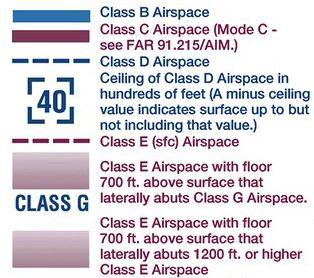Back to Course
Basic Private Pilot Ground School
0% Complete
0/0 Steps
-
Lesson 1: Your First Flight6 Topics|1 Quiz
-
Lesson 2: Maneuvers and the Traffic Pattern6 Topics|1 Quiz
-
Lesson 3: Understanding the Wind and Turns6 Topics|1 Quiz
-
Lesson 4: AOA, Stalls, and Other Scary Things5 Topics|1 Quiz
-
Lesson 5: Ground Reference, Maneuvers, and FARs4 Topics|1 Quiz
-
Lesson 6: Building Good Landings5 Topics|1 Quiz
-
Lesson 7: The Less Busy Airspace: G, E, D3 Topics|1 Quiz
-
Lesson 8: Class A, B, and C Airspace: The Busier Side of the Sky4 Topics|1 Quiz
-
Lesson 9: Flying Blind and Performance Calculations4 Topics|1 Quiz
-
Lesson 10: Soft and Short Field T.O.'s + Landings4 Topics|1 Quiz
-
Lesson 11: Start Your Engines: Engines, Systems, and Instruments6 Topics|1 Quiz
-
Lesson 12: Weight and Balance, Navigation Systems4 Topics|1 Quiz
-
Lesson 13: Luck with Weather6 Topics|1 Quiz
-
Lesson 14: Your First SOLO!2 Topics|1 Quiz
-
Lesson 15: VFR Charts and Navigation5 Topics|1 Quiz
-
Lesson 16: Weather Charts and Services6 Topics|1 Quiz
-
Lesson 17: Aeromedical Factors, ADM, FARS5 Topics|1 Quiz
-
Lesson 18: Flying at Night3 Topics|1 Quiz
-
Lesson 19: Cross Country Flight Planning4 Topics|1 Quiz
-
Lesson 20: Test Prep5 Topics|2 Quizzes
Lesson 7 of 20
In Progress
Lesson 7: The Less Busy Airspace: G, E, D
Class G, E, and D airspace:
Luckily whether you have a GED or PHD, you can learn the layout of the different airspace that makes up the NAS (national airspace system).
We’ll start off covering just a basic overview of class G airspace, class E airspace, and class D airspace, and leave the busier types, Class A, Class B, and Class C for later.
The Skinny
Here’s what to keep in mind over the next few TOPICS.
- Class G Airspace is Uncontrolled, ATC does not have anything to do with it, and you don’t need permission to go flying in it. Even drones can fly in Class G airspace without permission.
- Class E Airspace is Controlled, but there is no control tower directly connected with airports in Class E airspace. You do not need permission to enter Class E airspace when flying VFR.
- Class D Airspace is Controlled and the “primary” airport the Class D airspace covers (the airport in the center of the blue Class D ring) will have a control tower at that airport. You will need permission to enter Class D airspace from ATC, as well as permission to Taxi, Takeoff, or Land at the primary class D airport.
- There are six Classes of airspace, A,B,C,D,E,G. What happened to F? Class F airspace does not exist in the United States (it is used in some other parts of the world), so we’ll leave it out of this course.
The three most common phrases in aviation are “Was that for us?” “What’d he say?” and “Oh Sh*t!” Since computers are now involved in flying, a new one has been added: “What’s it doing now?”
Alaska Students Only:
If you are completing your flight training in Alaska, please complete these additional lessons separately: https://learn.fly8ma.com/courses/flying-in-alaska/
Lesson Content
0% Complete
0/3 Steps

